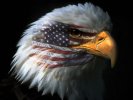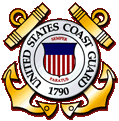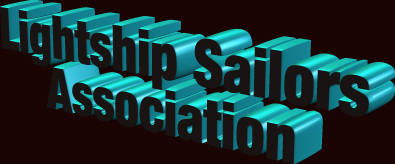Lightship bell raised from ocean's depths
By JOHN DOHERTY, Standard-Times staff writer

JACK IDDON/The Standard-Times
Lori Takakjian stands near the signal bell of the sunken Nantucket
Lightship 117, which sank in 1935. She was part of the salvage team that
retrieved the bell. |
 FAIRHAVEN -- The last
time anyone rang the enormous bronze bell of Nantucket Lightship 117, men's
lives were in danger. FAIRHAVEN -- The last
time anyone rang the enormous bronze bell of Nantucket Lightship 117, men's
lives were in danger.
 It was nighttime, May 14, 1935, and the 130-foot
Lightship was anchored where it always was; 50 miles southeast of Nantucket,
smack dab in the middle of the terminus of the trans-Atlantic shipping
lanes. It was nighttime, May 14, 1935, and the 130-foot
Lightship was anchored where it always was; 50 miles southeast of Nantucket,
smack dab in the middle of the terminus of the trans-Atlantic shipping
lanes.
 That night, the bell tolled through a heavy fog
to give ocean liner Olympic -- a 47,000 ton, 900-foot-long sister of the
infamous Titanic -- its bearing and guide it past the dangerous shoals. That night, the bell tolled through a heavy fog
to give ocean liner Olympic -- a 47,000 ton, 900-foot-long sister of the
infamous Titanic -- its bearing and guide it past the dangerous shoals.
 "We saw the Olympic loom out of the fog a short
distance away," remembered first mate C.E. Mosher of New Bedford in a
newspaper interview two months later. "The visibility was only 500 feet. A
crash was inevitable. I sounded the collision alarm. We all donned life
preservers. Then we waited." "We saw the Olympic loom out of the fog a short
distance away," remembered first mate C.E. Mosher of New Bedford in a
newspaper interview two months later. "The visibility was only 500 feet. A
crash was inevitable. I sounded the collision alarm. We all donned life
preservers. Then we waited."
 In the crash that followed, Mosher, the captain
and two fellow crew members would be saved. Five other men on board the 117,
all Cape Verdeans from New Bedford, died. In the crash that followed, Mosher, the captain
and two fellow crew members would be saved. Five other men on board the 117,
all Cape Verdeans from New Bedford, died.
Last week, undersea recovery
crews from Fairhaven raised the 1,200-pound signal bell of the 117.
 The bell's recovery was the climax of the
hunt for the 117 and the reward for six years of study and recovery
work. The bell's recovery was the climax of the
hunt for the 117 and the reward for six years of study and recovery
work.
 Capt. Eric J. Takakjian of Fairhaven's Quest
Marine Services said he hopes to make the bell the centerpiece of a
traveling exhibit that honors the men of the LV 117 and sheds light on
the dangerous and unique history of the lightships. Capt. Eric J. Takakjian of Fairhaven's Quest
Marine Services said he hopes to make the bell the centerpiece of a
traveling exhibit that honors the men of the LV 117 and sheds light on
the dangerous and unique history of the lightships.
 Quest Marine Services spends most of its time
doing research and development work for sonar and radar companies, and
deploying marine equipment like tidal gauges for the Woods Hole
Oceanographic Institute and the National Oceanographic and Atmospheric
Administration. Quest Marine Services spends most of its time
doing research and development work for sonar and radar companies, and
deploying marine equipment like tidal gauges for the Woods Hole
Oceanographic Institute and the National Oceanographic and Atmospheric
Administration.
 But Capt. Takakjian has developed a side
passion. But Capt. Takakjian has developed a side
passion.
 "Shipwrecks are our personal thing," he said. "Shipwrecks are our personal thing," he said.
 The challenge of finding, minding and
recovering lost vessels has led Capt. Takakjian and four friends to
learn the sea floor better than most veteran fishing boat skippers, and
to become collectors of arcane maritime data like "hang-numbers" --
coordinates of where fishing gear and parted anchors were snagged and
lost on something below the waves. The challenge of finding, minding and
recovering lost vessels has led Capt. Takakjian and four friends to
learn the sea floor better than most veteran fishing boat skippers, and
to become collectors of arcane maritime data like "hang-numbers" --
coordinates of where fishing gear and parted anchors were snagged and
lost on something below the waves.
 "The recovery, and subsequent preservation,
restoration and public display of the LV 117 artifacts at museums will
provide immeasurable benefits to the maritime community as a whole ...
by allowing their story to be told," Capt. Takakjian said. "The recovery, and subsequent preservation,
restoration and public display of the LV 117 artifacts at museums will
provide immeasurable benefits to the maritime community as a whole ...
by allowing their story to be told," Capt. Takakjian said.
 In the Lightship 117, Capt. Takakjian, a
self-taught maritime historian, finds a story worth telling. In the Lightship 117, Capt. Takakjian, a
self-taught maritime historian, finds a story worth telling.
 In the days before Loran, radar, sonar and
satellite navigation, transatlantic shipping was done mainly by maps and
stars. In the days before Loran, radar, sonar and
satellite navigation, transatlantic shipping was done mainly by maps and
stars.
 In the 1930s, radio and telegraph machines
had helped considerably. In the 1930s, radio and telegraph machines
had helped considerably.
 In the United States, lightships were
stationed along the East Coast. In the United States, lightships were
stationed along the East Coast.
 The boats would stay anchored at a designated
coordinate, flashing a bright light at night, bouncing a radio signal
across the waves. The boats would stay anchored at a designated
coordinate, flashing a bright light at night, bouncing a radio signal
across the waves.
 Ships traveling toward the country would get
within range of the lightships by following shipping lanes, and then
latching on to the radio signal and following it in. Ships traveling toward the country would get
within range of the lightships by following shipping lanes, and then
latching on to the radio signal and following it in.
 Capt. Takakjian said a lookout on the
incoming vessel would then keep an eye peeled for the lightship and
adjust the ship's course to avoid collision. Capt. Takakjian said a lookout on the
incoming vessel would then keep an eye peeled for the lightship and
adjust the ship's course to avoid collision.
 "That's how it was supposed to work, anyway,"
he said. "That's how it was supposed to work, anyway,"
he said.
 Four months before the Olympic struck the
117, the luckless lightship had been sideswiped by another liner, the
Washington, the largest ocean-going vessel ever built in the United
States to that point. Four months before the Olympic struck the
117, the luckless lightship had been sideswiped by another liner, the
Washington, the largest ocean-going vessel ever built in the United
States to that point.
 For the crews of the lightships, monthlong
watches onboard their ships were often long periods of boredom,
punctuated by fear of being cleaved in half by bigger ships. For the crews of the lightships, monthlong
watches onboard their ships were often long periods of boredom,
punctuated by fear of being cleaved in half by bigger ships.
 A lightship service boat would ferry relief
crews to the lightship every month. A lightship service boat would ferry relief
crews to the lightship every month.
 Capt. Takakjian said the Lightship 117 was
considered the most exposed lightship on the East Coast. Capt. Takakjian said the Lightship 117 was
considered the most exposed lightship on the East Coast.
 It was farthest from the coast and subject to
the heavy seas and unpredictable weather of the North Atlantic. It was farthest from the coast and subject to
the heavy seas and unpredictable weather of the North Atlantic.
 It also bordered the triangular swath of sea
known as the Nantucket Shoals, where water depth suddenly decreased and
where dozens of ships have run aground and been pounded to pieces by the
surf over the years. It also bordered the triangular swath of sea
known as the Nantucket Shoals, where water depth suddenly decreased and
where dozens of ships have run aground and been pounded to pieces by the
surf over the years.
 The last Nantucket Lightship was taken out of
service in 1983. The last Nantucket Lightship was taken out of
service in 1983.
 Capt. Takakjian, whose mother was a naval
historian, had long wondered about the location of the sunken lightship. Capt. Takakjian, whose mother was a naval
historian, had long wondered about the location of the sunken lightship.
 He began tracking hang numbers in the general
area of the known lightship station, which is in what was once a rich
cod fishery and is now known as the Nantucket Lightship closed area -- a
no-go zone for fishermen. He began tracking hang numbers in the general
area of the known lightship station, which is in what was once a rich
cod fishery and is now known as the Nantucket Lightship closed area -- a
no-go zone for fishermen.
 Within a two-mile radius of where the wreck
would be found, 45 hang-numbers had been recorded. Within a two-mile radius of where the wreck
would be found, 45 hang-numbers had been recorded.
 "Whatever was down there was heavy," he said. "Whatever was down there was heavy," he said.
 Using underwater sonar, a crew of Sea Rovers
-- underwater recovery experts -- found the lightship in 1998. Using underwater sonar, a crew of Sea Rovers
-- underwater recovery experts -- found the lightship in 1998.
 In breaks from Quest's contract work,
underwater crews have removed the dense tangle of anchor chain, nets and
other fishing gear that have accumulated on the 117 in the past
half-century. In breaks from Quest's contract work,
underwater crews have removed the dense tangle of anchor chain, nets and
other fishing gear that have accumulated on the 117 in the past
half-century.
 Several previous recovery missions brought
the ship's helm, portholes, telegraph, signal light and binnacle to the
surface. Several previous recovery missions brought
the ship's helm, portholes, telegraph, signal light and binnacle to the
surface.
 Those items have been displayed at a Sea
Rovers conference in Boston this spring. Those items have been displayed at a Sea
Rovers conference in Boston this spring.
 But Capt. Takakjian hopes to have a much more
complete exhibit of the lightship artifacts -- perhaps based at New
Bedford's Whaling Museum -- completed by spring 2006. But Capt. Takakjian hopes to have a much more
complete exhibit of the lightship artifacts -- perhaps based at New
Bedford's Whaling Museum -- completed by spring 2006.
 It would be a glimpse into the work done by
the Lightship Service during its 90-year run -- work that is now handled
by satellites and buoys, he said. It would be a glimpse into the work done by
the Lightship Service during its 90-year run -- work that is now handled
by satellites and buoys, he said.
 In the meantime, the restoration work on the
bell continues at Quest's headquarters at Capt. Takakjian's home on
Sconticut Neck. In the meantime, the restoration work on the
bell continues at Quest's headquarters at Capt. Takakjian's home on
Sconticut Neck.
 Capt. Takakjian said he was surprised to find
the lightship intact. Capt. Takakjian said he was surprised to find
the lightship intact.
 Reports from survivors described the smaller
vessel being cut in half by the giant Olympic. Reports from survivors described the smaller
vessel being cut in half by the giant Olympic.
This story appeared on Page A1 of The Standard-Times
on September 3, 2004.
|

|
|




![]()

![]()



![]() Back to
Lightship Stations and the Ships that served on them.
Back to
Lightship Stations and the Ships that served on them.